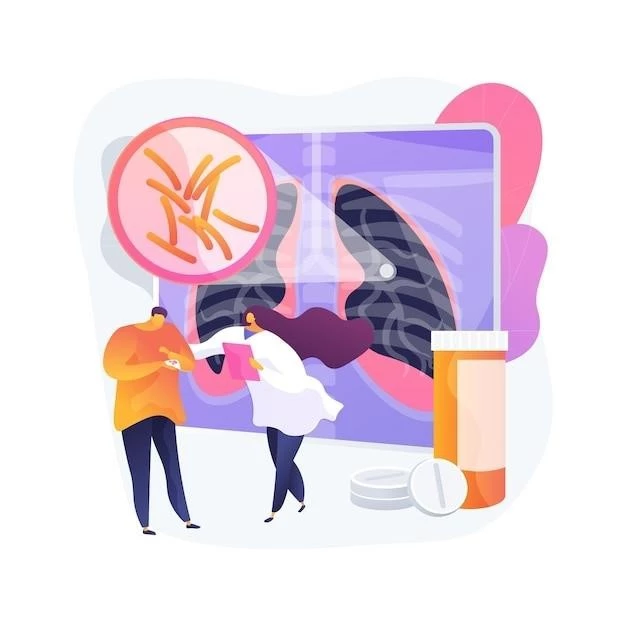Causes of Bronchopulmonary Dysplasia
– Premature birth and underdeveloped lungs
Premature birth, especially before 32 weeks, is a major risk factor for bronchopulmonary dysplasia․ Underdeveloped lungs in premature infants are not fully equipped to support breathing, leading to respiratory distress․ The immature respiratory system struggles to adapt to the extrauterine environment, increasing susceptibility to lung damage and inflammation․
– Prolonged use of mechanical ventilation
Prolonged mechanical ventilation in newborns with respiratory distress can contribute to bronchopulmonary dysplasia․ The pressure from the ventilator, oxygen levels, and duration of ventilation can cause damage to the delicate lung tissues․ Continuous mechanical support, while necessary in some cases, can lead to lung injury, inflammation, and ultimately the development of this chronic lung condition․
– Oxygen toxicity and inflammation
Excessive oxygen levels, while beneficial in some cases, can lead to oxygen toxicity in premature infants․ This can cause oxidative stress and damage to the developing lungs, leading to inflammation and injury․ The immature lung cells are particularly vulnerable to high levels of oxygen, increasing the risk of bronchopulmonary dysplasia․
Symptoms and Signs of Bronchopulmonary Dysplasia
– Difficulty breathing (shortness of breath)
Shortness of breath is a common symptom of bronchopulmonary dysplasia due to the damaged lungs’ inability to efficiently exchange oxygen and carbon dioxide․ Infants may exhibit increased respiratory effort, flaring nostrils, and retracting between the ribs when breathing․ This difficulty in breathing can lead to poor oxygenation and affect the overall well-being of the newborn․
– Wheezing and coughing
Wheezing and coughing are common signs of bronchopulmonary dysplasia, indicating narrowed airways and mucus buildup in the lungs․ Wheezing results from the constricted air passages, while coughing is the body’s attempt to clear the airways․ These symptoms can worsen with respiratory infections, leading to further respiratory distress and complications in infants․
– Rapid breathing and increased heart rate
Rapid breathing and an increased heart rate are common symptoms of bronchopulmonary dysplasia in newborns․ The body compensates for the reduced lung function by breathing faster to maintain oxygen levels․ The heart also beats faster to pump oxygenated blood throughout the body․ These responses can be heightened during physical activity or when the infant is stressed, indicating the respiratory challenges they face․
Treatment Options for Bronchopulmonary Dysplasia
– Oxygen therapy and respiratory support
Oxygen therapy and respiratory support are crucial in managing bronchopulmonary dysplasia․ Supplemental oxygen is provided to ensure adequate oxygen levels in the blood․ Mechanical ventilation may be required to support breathing․ Continuous positive airway pressure (CPAP) can help keep the airways open․ These interventions aim to reduce respiratory distress and improve the lung function in affected infants․
– Medications to reduce inflammation and improve lung function
Medications like corticosteroids and diuretics are used to reduce inflammation and manage fluid buildup in the lungs․ Inhaled bronchodilators help open the airways, making breathing easier․ Surfactants may be administered to improve lung compliance; These medications target different aspects of bronchopulmonary dysplasia to alleviate symptoms and enhance respiratory function in affected infants․
– Nutritional support and physical therapy
Nutritional support is vital for infants with bronchopulmonary dysplasia to ensure adequate growth and development․ Specialized formulas or feeding strategies may be implemented to meet the nutritional needs of these infants․ Physical therapy can help improve muscle strength and mobility, aiding in the overall physical well-being of the babies affected by this condition․ It plays a crucial role in supporting their respiratory efforts and promoting optimal health․
Prevention of Bronchopulmonary Dysplasia
– Prenatal care to prevent premature birth
Prenatal care plays a crucial role in preventing bronchopulmonary dysplasia by addressing risk factors for premature birth․ Regular prenatal check-ups, managing maternal health conditions, and promoting a healthy lifestyle can reduce the likelihood of preterm labor․ Avoiding exposure to harmful substances and following medical advice can help ensure the infant’s lungs develop fully, lowering the chances of developing this respiratory condition․
– Avoiding unnecessary exposure to mechanical ventilation
Avoiding unnecessary exposure to mechanical ventilation in newborns can help prevent bronchopulmonary dysplasia․ Careful monitoring of respiratory function and using non-invasive alternatives like CPAP when possible can reduce the risk of lung injury․ Properly assessing the need for ventilation and minimizing its duration can safeguard the delicate lung tissues of infants, decreasing the occurrence of this chronic respiratory condition․
– Early intervention to manage respiratory distress in newborns
Early intervention is critical in managing respiratory distress in newborns to prevent bronchopulmonary dysplasia․ Prompt recognition of breathing difficulties, immediate respiratory support, and close monitoring can help mitigate lung damage․ Providing specialized care in neonatal units, including oxygen therapy and ventilation if necessary, can improve outcomes and reduce the risk of developing this debilitating lung condition in premature infants․

Complications Associated with Bronchopulmonary Dysplasia
– Chronic lung disease and recurring respiratory infections
Bronchopulmonary dysplasia can lead to chronic lung disease, characterized by long-term respiratory issues․ The damaged lungs are more susceptible to recurring respiratory infections, including pneumonia and bronchiolitis․ These infections can exacerbate breathing difficulties, worsen lung damage, and necessitate frequent medical interventions․ Managing these complications is essential in improving the quality of life for infants with bronchopulmonary dysplasia․
– Developmental delays and growth problems
Children with bronchopulmonary dysplasia may experience developmental delays and growth issues due to the impact of the condition on overall health․ Nutritional deficiencies, chronic illness, and the strain on the body from compromised lung function can affect physical and cognitive development․ Early interventions, monitoring growth milestones, and providing appropriate support are crucial in addressing these challenges and promoting optimal development in affected children․
– Increased risk of asthma and other respiratory conditions
Individuals with bronchopulmonary dysplasia face a higher likelihood of developing asthma and other respiratory conditions later in life․ The lung damage and inflammation experienced during infancy can lead to long-term respiratory issues․ The compromised lung function and structural changes may predispose them to chronic conditions like asthma, bronchiectasis, and obstructive lung diseases․ Ongoing monitoring and comprehensive care are essential to manage these potential respiratory complications effectively․
